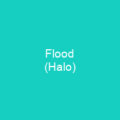The Netherlands: A Country of Contrasts
Imagine a land where the sea meets the sky in an eternal dance, where history whispers through ancient walls, and modernity thrives in bustling cities. Welcome to the Netherlands, a country that seamlessly blends tradition with innovation, making it one of Europe’s most fascinating destinations.
The Geography: A Lowland Tale
With about 26% of its land area below sea level, the Netherlands is a lowland tale. The Rhine, Meuse, and Scheldt rivers have sculpted this landscape over millennia, creating a delta that serves as both a challenge and an opportunity for the Dutch people. How can such a low-lying country thrive in a world where water often seems to be its greatest adversary?
Floods: A Test of Resilience
The Netherlands has faced numerous floods throughout history, from St. Lucia’s flood (1287) to the devastating North Sea flood of 1953. These events have forged a nation that is not only resilient but also innovative in its approach to water management. The Delta Works, a series of dams and barriers, has been instrumental in protecting the country from future flooding. But even as these structures stand tall, the Dutch continue to adapt, with plans like the Room for the River program, which seeks to balance flood protection with environmental sustainability.
The People: A Mosaic of Cultures
With a population of over 18 million people, the Netherlands is a vibrant tapestry of cultures. The majority are ethnically Dutch, but significant minorities include Turks, Moroccans, Indonesians, and Surinamese. Amsterdam alone has over half its young population with non-western backgrounds. This diversity is not just a demographic fact; it’s woven into the fabric of daily life in this cosmopolitan nation.
Language: A Multilingual Melody
Dutch is the official language, but the country’s linguistic landscape is far more complex. English is widely spoken, and other languages like Frisian, Limburgish, and Yiddish also hold their place in this multilingual mosaic. The Dutch value learning foreign languages, with 90% of the population conversing in English. This linguistic diversity reflects a nation that embraces openness and inclusivity.
Religion: A Quiet Presence
Christianity has long been a cornerstone of Dutch life, but its influence is waning. Today, 55% of the population identifies as non-religious, with Catholics (19.8%), Protestants (14.4%), and Muslims (5.2%) forming the largest religious groups. The Constitution guarantees freedom of education, allowing schools based on religious principles to receive government funding. This balance between tradition and modernity is a hallmark of Dutch society.
Education: A Path to Progress
The Netherlands boasts a multi-level education system that prepares students for various paths in life. From VMBO (vocational middle school) to VWO (comprising atheneum and gymnasium), the country ensures that every student has access to quality education. Dutch universities, publicly funded and managed, offer professional bachelor’s degrees and prepare students for research university studies.
Healthcare: A Pillar of Well-being
The Netherlands’ healthcare system is renowned for its effectiveness. Ranked top in several health consumer indices, it provides a dual financing system with mandatory insurance and taxes covering long-term treatments and disability costs. Patients have the freedom to choose their healthcare providers and insurers, ensuring that care is both accessible and personalized.
Culture: A Canvas of Creativity
The Netherlands has a rich cultural scene that spans from classical music to contemporary electronic dance music (EDM). The country’s contribution to art includes famous painters like Rembrandt, Vermeer, and Van Gogh. Dutch literature is equally celebrated, with authors like Anne Frank and Harry Mulisch leaving indelible marks on the world.
Sports: A Nation in Motion
Sports are deeply ingrained in Dutch culture, with football being the most popular team sport. The national football team has achieved significant success, including runner-up finishes in three World Cups and a European Championship win. Other sports like field hockey, volleyball, baseball, cycling, Formula 1, and kickboxing also enjoy widespread popularity.
Conclusion
The Netherlands is a country that seamlessly weaves together its rich history with modern innovation, creating a unique blend of tradition and progress. From the low-lying lands to the bustling cities, from the diverse population to the vibrant cultural scene, this nation stands as a testament to resilience, openness, and creativity.

You want to know more about Netherlands?
This page is based on the article Netherlands published in Wikipedia (retrieved on March 7, 2025) and was automatically summarized using artificial intelligence.





